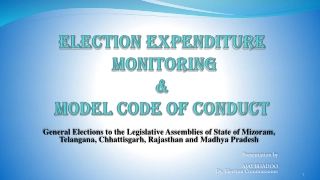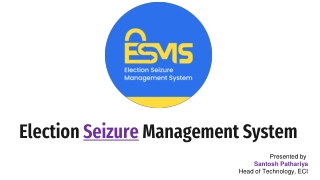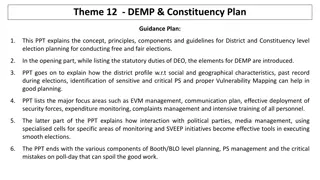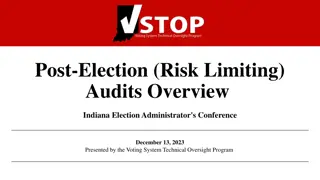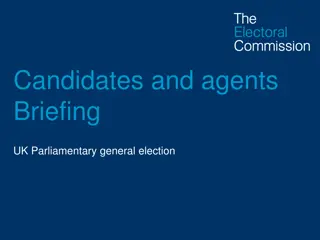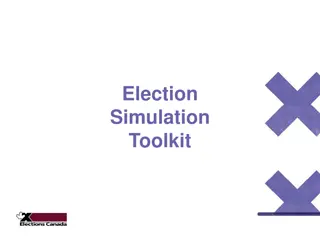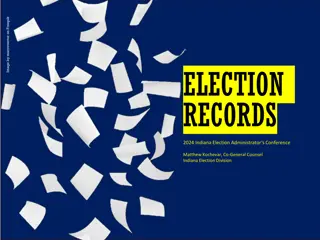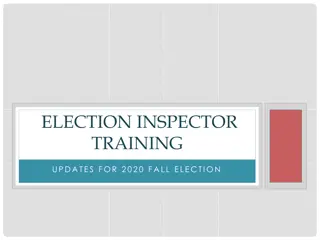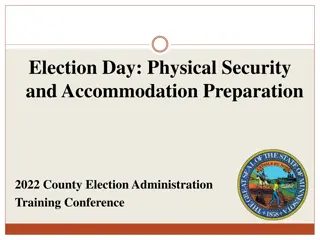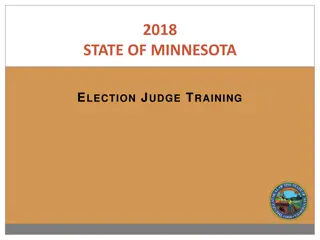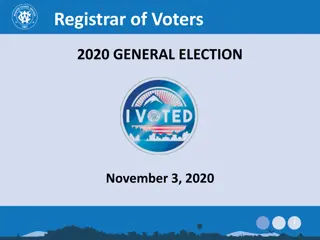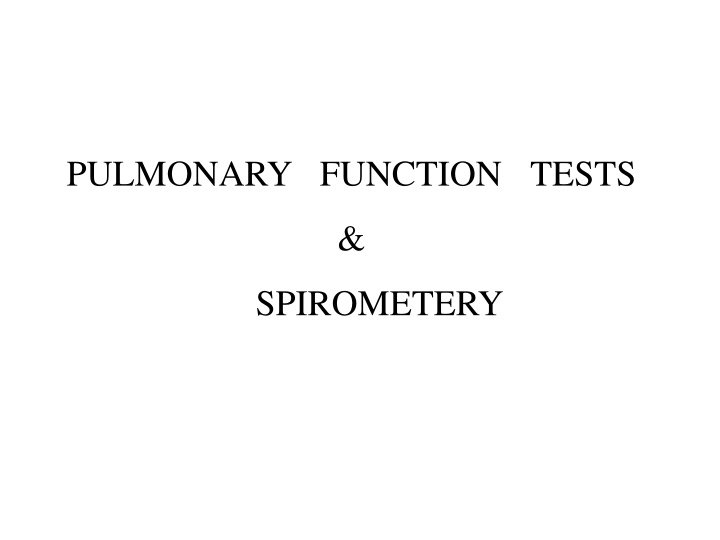
Ensuring Election Infrastructure Security
Designated as critical infrastructure, election systems face various threats from potential adversaries with different motivations. Mitigating vulnerabilities, strengthening password policies, implementing network segmentation, having a backup plan, and using maintainable equipment are essential steps to safeguard election infrastructure.
Download Presentation

Please find below an Image/Link to download the presentation.
The content on the website is provided AS IS for your information and personal use only. It may not be sold, licensed, or shared on other websites without obtaining consent from the author. If you encounter any issues during the download, it is possible that the publisher has removed the file from their server.
You are allowed to download the files provided on this website for personal or commercial use, subject to the condition that they are used lawfully. All files are the property of their respective owners.
The content on the website is provided AS IS for your information and personal use only. It may not be sold, licensed, or shared on other websites without obtaining consent from the author.
E N D
Presentation Transcript
PULMONARY FUNCTION TESTS & SPIROMETERY
PULMONARY FUNCTION TEST Pulmonary function tests (PFTs) provide the clinician with information about the integrity of the airways, the function of the respiratory musculature, and the condition of the lung tissues themselves. A thorough evaluation of pulmonary function involves several tests that measure lung volumes and capacities, gas flow rates, gas diffusion, and gas distribution.
TESTS OF LUNG VOLUMEAND CAPACITY Tests of basic lung volumes and capacities include a graphic tracing called a spirogram. Spirometers may be of the traditional manual water-seal type, or they may be electronic computerized devices (e.g., pneumotachometer).
BODY PLETHYSMOGRAPHY In body plethysmography, the patient sits inside an airtight box, inhales or exhales normally, and then a shutter drops across their breathing tube. The subject makes respiratory efforts against the closed shutter (this looks, and feels, like panting), causing their chest volume to expand and decompressing the air in their lungs.
DLCO (DIFFUSING CAPACITY OF THE LUNG FOR CARBON MONOXIDE) This test is used to estimate the transfer of oxygen from the alveoli in lungs to bloodstream. The diffusing capacity of the lungs (DL) of oxygen is technically very difficult to measure, and the test actually measures the diffusing capacity of carbon monoxide (DLCO) which provides a valid estimate of the oxygen diffusion.
GENERAL CONSIDERATIONS A sitting position is typically used at the time of testing to prevent the risk of falling and injury in the event of a syncopal episode, although PFTS can be performed in the standing position. Patients are advised not to smoke for at least one hour before testing, not to eat a large meal two hours before testing and not to wear tight fitting clothing as under these circumstances results may be adversely effected. False teeth are left in place unless they prevent the patient from forming an effective seal around the mouth piece.
SPIROMETRY John Hutchinson (1811-1861) inventor of the spirometer and originator of the term vital capacity (VC). Spirometry is a physiological test that measures the volume of air an individual inhales or exhales as a function of time. (ATS / ERS 2005 ) .
Measurements that are made include: Forced expiratory volume in one second (FEV1) Forced vital capacity (FVC) The ratio of the two volumes (FEV1/FVC)
Spirometry can demonstrate two basic patterns of disorders Obstructive pattern Restrictive pattern
FLOW VOLUME CURVE/ LOOP Flow volume curves are produced when a patient performs a maximal inspiratory manoeuvre which is then followed by a maximal expiratory effort.
PFT INTERPRETATION Spirometry and the calculation of FEV1/FVC allows the identification of obstructive or restrictive ventilatory defects. A FEV1/FVC < 80 % where FEV1 is reduced more than FVC signifies an obstructive defect. Common examples of obstructive defects include chronic obstructive pulmonary disease (COPD) and asthma. An FEV1/FVC > 80% where FVC is reduced more so than FEV1 is seen in restrictive defects such as interstitial lung diseases (e.g. idiopathic pulmonary fibrosis) and chest wall deformities


